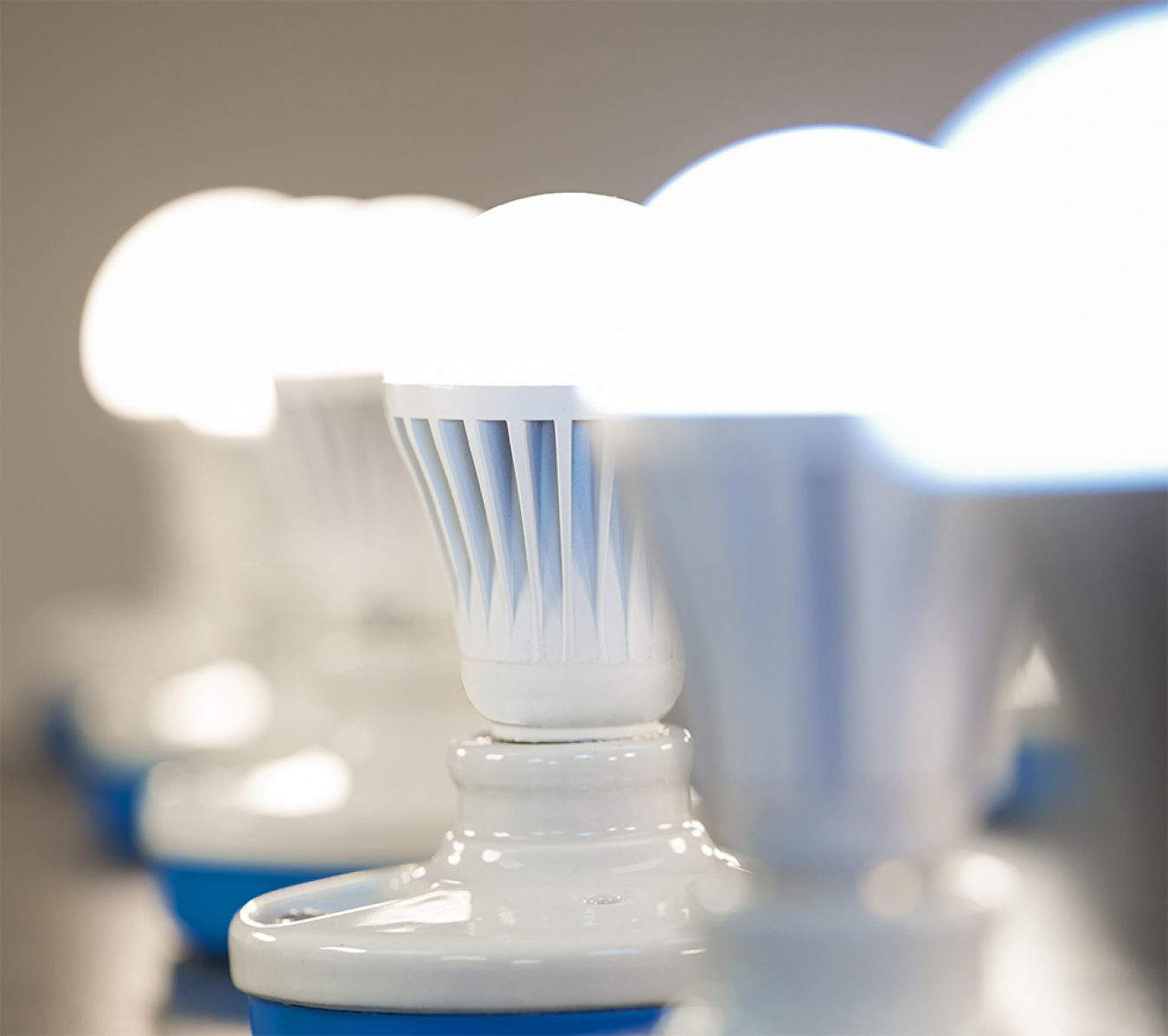
The cost of LED A-type light bulbs has decreased by 94% since 2008, according to the 2016 <em>Revolution...Now</em> report.
Editor's Note: This blog post is the first in a week-long series examining the five clean energy technologies documented in the 2016 Revolution...Now report. Check back throughout the week to learn more about distributed and utility-scale solar, land-based wind, and electric vehicles.
The 2016 Revolution…Now report was released last week and Lighting Program Manager for EERE’s Building Technology Office, Jim Brodrick, sat down with me to discuss the report’s significant findings. Among them were the facts that total installations of A-Type light-emitting diode (LED) light bulbs more than doubled last year and that cumulative savings offered by all LED products from 2015 through 2035 have the potential to save Americans $630 billion in energy costs. Brodrick is helping to pave the way for these technologies, which will help transform the way people live and work, as well as reshape the lighting industry. He shares where we’ve been, where we’re going, and what’s ahead.
Question: What was the state of LEDs before the Obama Administration?
Answer: In 2007-2008, LEDs were just coming on the market. Their performance was OK, but not great, and they were costly. Think of cell phones in the late ’80s. [LEDs] were mostly used in desk lamps, flash lights, and offered a small amount of light. At that time, it was the early adopters, people who wanted to try new things, that were using them.
Q: What was the major factor in A-Type LED bulb installations doubling last year?
A: There’s been a large jump in the last couple of years. They are more available now. You can get them in the big box [stores] or even on Amazon. The performance is much better. The cost has continued to come down, which opens it up to a wider range of people. It isn’t such a big decision anymore to buy one or not to buy one. There are also a lot more manufacturers who are making them today. There was a big jump between 2013-2014 and a huge jump from 2014-2015 from 77 million A-Type bulb installations to 202 million.
Q: Why has cost come down? 94 percent since 2008?
A: Think about flat panel televisions in 2004. A 32-inch was around $4,000. Today, it’s around $400. There’s a trend for electronics and chips for LEDs came down in that realm. It’s not a shock. Consumers are basically getting more today for your money. They are mass produced, which equals more sales.
Q: What role did the Energy Department play in dropping the costs?
A: We had an L Prize Design contest to 90 lumens per watt compared to 15. The L Prize solved a lot of problems in getting high-performance chips. They also solved the heat transfer problem to allow chips to be more efficient. The Phillips Company won the L Prize and we proved to the lighting world that if Phillips could do it, many companies could do it. Roughly 200 L Prize lamps were submitted that have gone past 50,000 hours. At that rate, you’d never change a light bulb for 18 years.
We also funded research and development projects with companies to lower the cost of manufacturing of the basic chip. In addition, we funded a number of projects that improved components (phosphors, miniaturized electrons, and optics) and their assembly.
Q: What advancements have made this happen?
A: The key element was improved chips that provided more light output with better light quality and less watts, thus more efficiency. In 2009-2010, many things came together to allow more efficiency and light quality. For example, drivers. Drivers started to fit more readily into a screw in light.
Q: Where are we going next?
A: There will be further improvements to the chip. Currently, 150 lumens per watt to 250-350 lumens per watt. Lighting will move to new applications because of solid-state lighting’s flexible spectrum. Certain spectrums are beneficial to human vision, health, and agriculture. Plant growth under selected spectrum results in a shorter time to market and possibly more nutritious.
In addition, organic LEDs are arriving. They come in a thin sheet like saran wrap and can be bent because of the flexible enclosure. They’re just starting to come on the market and are where LEDs were eight years ago. They don’t look like lights. They’re enticing because you can look though them.

